Replacing t by
| next curve | previous curve | 2D curves | 3D curves | surfaces | fractals | polyhedra |
RATIONAL SEXTIC
The rational
sextics are the sextics of genus
zero, therefore with between one or ten singularities making the genus
decrease by 10 (in the complex projective plane).
| Cartesian parametrization: Replacing t by |
Most of the remarkable rational sextics are part of the
family of the rational curves of degree 6 that are bounded, with Oy
as a symmetry axis, and parametrization ,
as it will be noted thereafter.
Examples of rational sextics:
- the quadrifolium
and its conchoids:
(a = 0: quadrifolium, a = 1 : Ceva
trisectrix , a = 2: double
egg: a > 2: peanut
curve)
- the Dürer
folium and its conchoids:
(a = 0: Dürer folium, a = 1: Freeth's
nephroid )
- the epitrochoids
with parameter q = 2:
(a = 1 : Dürer
folium, a = 3: nephroid).
- the hypotrochoids
with parameter q = 4:
(a = 1: quadrifolium, a
= 3: astroid).
- the epitrochoids
with parameter q = 1/2: .
- the hypotrochoids
with parameter q = 5/2 (5-branch star):
.
- the cornoid:
- the Maltese
cross:
- the double
drop of water: 
- the Cayley
sextic:
- the Lissajous
curve:
- the windmill:
- the bow
tie curve:
- the beetle
curves: (including
the quadrifolium:
)
- the Talbot
curves: .
|
In order of apparition: a = 0: quadrifolium a = pi/4: Maltese cross a= pi/2: double drop of water a = 3pi/4: double egg a = pi-arctan(1/2): Dürer folium a= pi-arctan(1/3): curve similar to the cornoid This curves are the projections on the planes containing Oy of the 3D curve: |
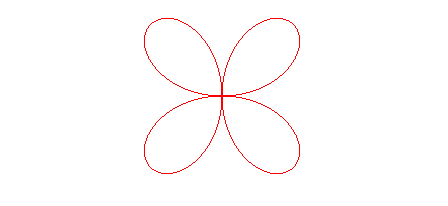 |
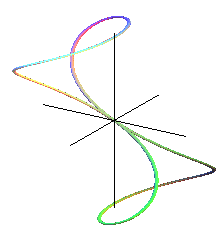 |
Other examples:
| A beautiful sextic with a triple point where the tangents
coincide, which belongs to the family of the basins: |
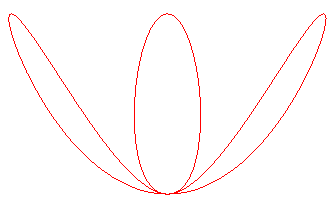 |
| Another one, which cannot be decomposed, though it seems
to be composed of a circle and an eight: |
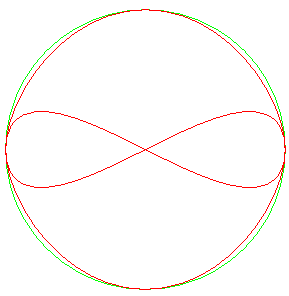 |
| This third one also seems to be composed of a circle
and a cardioid:
This curve is associated to the triangles an altitude, a median, and a bisector of which are concurrent (triangles considered by E. LEMOINE in 1885 in mathesis): if the vertex of the altitude is fixed on (0,1) and that of the median on (0,0), then this curve is the locus of the third vertex of such a triangle. The locus of the intersection point is a septic. |
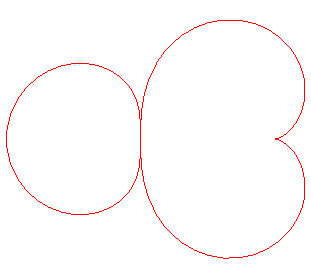 |
| next curve | previous curve | 2D curves | 3D curves | surfaces | fractals | polyhedra |
© Robert FERRÉOL 2017